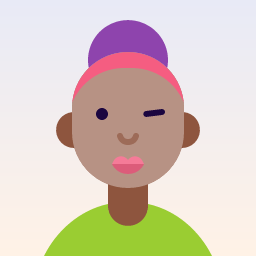Are you looking to impress someone in the Netherlands with your compliments? One surefire way is by expressing how beautiful someone or something is. In this guide, we will explore different ways to say “so beautiful” in Dutch, including both formal and informal variations. While regional variations exist, we will primarily focus on commonly used phrases. So, get ready to charm your way into someone’s heart with these delightful expressions!
Formal Ways to Say “So Beautiful”
If you want to express admiration in a more formal setting or to someone you just met, consider using the following phrases:
“Zo mooi” (so beautiful)
This simple yet elegant phrase can be used universally and will surely leave a lasting impression. However, read further to discover alternative expressions and a touch of regional flavor.
Informal Ways to Say “So Beautiful”
When speaking to friends, family, or in casual conversations, you have more flexibility to play with the language. Here are some informal ways to say “so beautiful” in Dutch:
1. “Prachtig”
The word “prachtig” is widely used to convey something as stunningly beautiful. For example:
“Wat een prachtig uitzicht!” (What a stunning view!)
By incorporating “prachtig” into your vocabulary, you’ll be able to compliment various things ranging from landscapes to artwork without missing a beat.
2. “Schitterend”
If you want to emphasize something’s radiance, “schitterend” is the word for you. Use it to highlight the extraordinary beauty of a person or an object:
“Jouw glimlach is echt schitterend!” (Your smile is truly radiant!)
This term adds a touch of brilliance to your compliments and ensures they’re remembered for a long time.
3. “Adembenemend”
When something or someone completely takes your breath away, the word “adembenemend” conveys that feeling perfectly:
“De zonsondergang was adembenemend mooi!” (The sunset was breathtakingly beautiful!)
Use this phrase sparingly for truly extraordinary occasions, as it carries a lot of weight and impact.
Regional Variations
While Dutch is spoken throughout the Netherlands and Belgium, there are some regional variations in language usage. Let’s explore a couple of them:
1. “Bloedmooi”
This phrase is more commonly used in Belgium and Southern Netherlands. It translates to “blood beautiful” in English, but don’t be alarmed by the word “bloed” (blood). Here, it’s just used to emphasize attractiveness:
“Jij bent bloedmooi!” (You are drop-dead gorgeous!)
Employ this expression with caution, as it can come across as quite intense and passionate. Use it only with someone you have a close relationship with.
2. “Mooi zeg”
This expression is more commonly heard in the northern parts of the Netherlands, and it translates to “beautiful, huh?” It’s a charming and friendly phrase to highlight beauty:
“Dat nieuwe kapsel van je is echt mooi zeg!” (That new hairstyle of yours is really beautiful, huh?)
Using this phrase will make you sound like a local, and it’s a great way to connect with people from the northern regions.
Summary
Now that you’ve explored various ways to say “so beautiful” in Dutch, you’ll have a wide array of compliments at your disposal. From formal expressions like “zo mooi” to informal phrases like “prachtig,” “schitterend,” and “adembenemend,” you can now effortlessly charm others in the Netherlands with your appreciation for beauty.
Remember, regional variations such as “bloedmooi” in Belgium and “mooi zeg” in northern Netherlands add a touch of local flavor to your compliments. Practice these phrases, sprinkle them in your conversations, and watch as people light up with joy when they hear how beautifully you speak Dutch!

